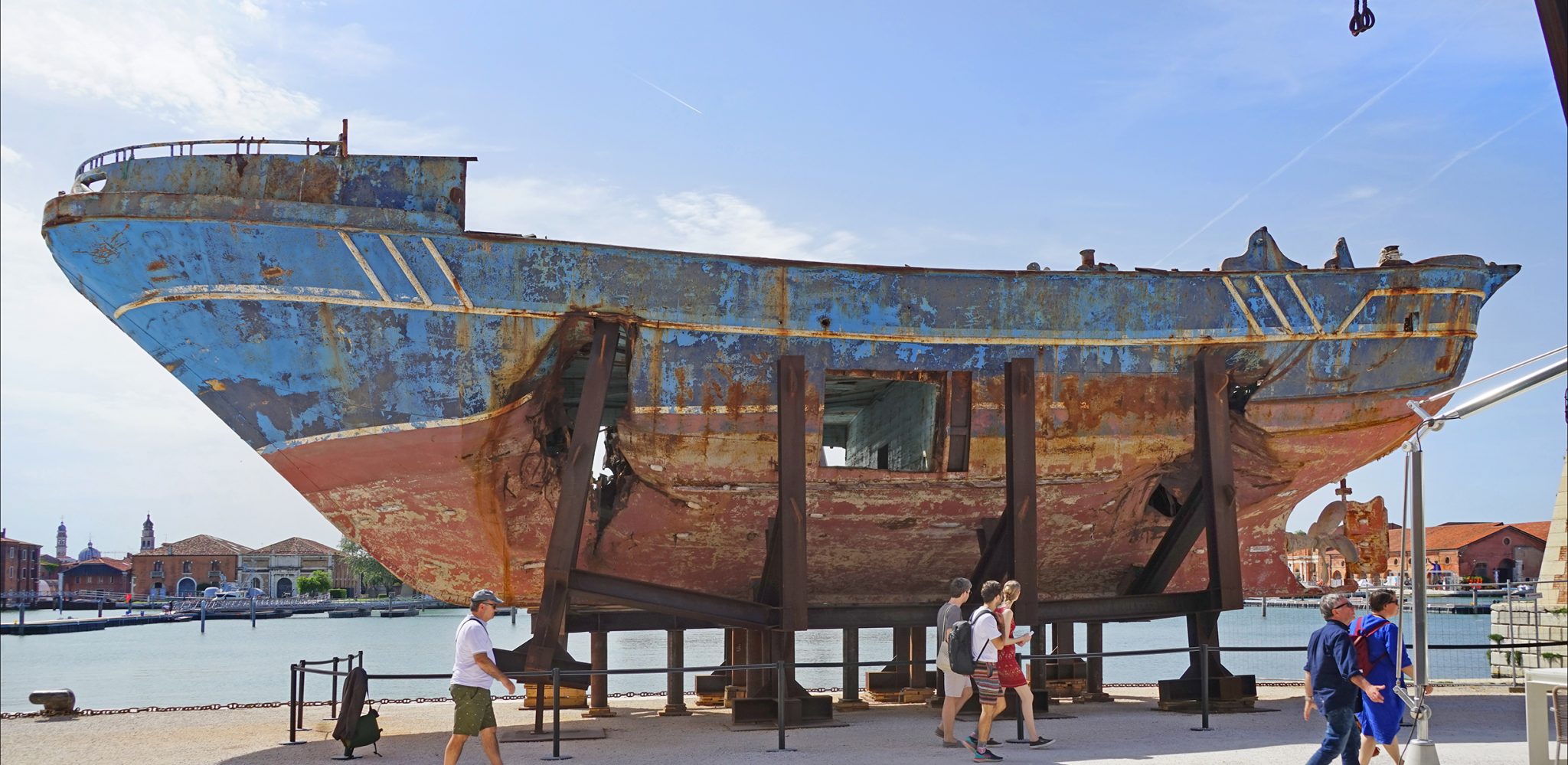As the artworld prepares to jet off to La Serenissima, Martin Herbert wonders who it’s really all for
The first time I visited the Venice Biennale was in 2001. The curator that year, as for the previous edition, was Harald Szeemann, whose typically oracular title this time was Plateau of Humankind. It was a fun, eye-opening trip; I’d never been to Venice before, and the experience of La Biennale is indivisible from that of the city. Plus, I was writing for a now-defunct Italian art magazine and had access – or maybe not official access, but I wandered in – to the international exhibition before the vernissage and so got to see how virtually nothing was ready even as the curtain was about to rise, how seat-of-the-pants this huge event can be. Which was sort of unnerving, and sort of funny. Dozens of Italians swearing at each other: the plateau of humankind, right here. During an unseasonal downpour I ducked into a tiny café and there was Szeemann, a supercurator ringed by sycophants, radiating bearish and beardy gravitas and blowing cigar smoke everywhere. Old school. Later, as the opening unfolded, there was of course a lot of blithe partying. 9/11 was three whole months away.
All of this inevitably feels a few lifetimes ago, long enough for this writer at least to be pretty much done with the Venice Biennale. Certainly, there are a few things I’d like to see this time around – and no disrespect to this year’s curator, Cecilia Alemani, whose overarching title, The Milk of Dreams, vouchsafes a tenuous, if seemingly complicated, optimism that, as the geopolitical scene unravels nightmarishly, might strike one as audacious. But I probably won’t go. And certainly not during the opening: I for one am not up for multiple days of relentless cognitive-dissonance management while doomscrolling a war. Other people, stronger of constitution, surely are. As with the 2019 edition, in which, thanks to Christoph Büchel, a ship-as-readymade in which hundreds of migrants drowned sat right next to a café thronged by networkers, whatever terrible things are and have been going on in the world, artworld citizens can reliably tune it out over Aperol. This time, a percentage of politicised boycotts and withdrawals will militate against the idea that the Venice Biennale is a total bubble, and a percentage of visitors will be ignoring them.
We know we shouldn’t fly there, but we do. We know we shouldn’t even be there, contributing to all the problems that runaway tourism has brought Venice. We know, looking at the superyachts in the Grand Canal, that the Biennale is a prism of wealth inequality that we’re effectively sanctioning by our gawping presence. We go anyway, get numb, tell ourselves it’s important to meet people and grasp the current narrative. But you can’t really grasp it on any kind of granular level, especially not at the opening, because the event is too big and you hustle yourself along too fast, and the person you’re texting with is on the other side of the city and you get lost trying to meet them in the middle. It’s a Sisyphean, ethically problematic experience that peer pressure, and the commerce of opinion, insists you show up for.
I can even imagine that all these downsides will be, on some level, pleasantly familiar to someone, a person assumedly skilled in compartmentalising, who’s relieved to be back on familiar (if sinking) ground after two years of pandemic hell. But I think, or I hope, that if I were to go I’d also be asking the question that’s headed nearer my forebrain over the last few editions, as the contradictions have mounted: what is this for, anymore? One might then ask what would replace it, as if there needs to be a replacement, as if there weren’t – for example – a fundamental problem with an expanding artworld continuing to try and meet somewhere that stays the same size. The nonmercantile argument for big biennales is that they ‘tell us where we are’ in cultural terms, but they can also read as calculated syntheses of currently fashionable intellectual topics and currently fashionable/saleable artists (and genre revivals: the lodestar of Alemani’s show is the surrealist Leonora Carrington). They’re outwardly noncommercial events with a ton of sales, market-shaping and hustle for exposure going on below. And meanwhile the curatorial spine is just that, the official centre of an event inflated with offsites, tie-in institutional exhibitions and more: static fogging the signal that constitutes the main curator’s proposed thematic. And next time, assuming it happens, the details will change but everything else will stay approximately the same. Just maybe bigger.
One could accordingly construe the Venice Biennale as a zombie format, determined – or, at least, collectively encouraged – to stagger on until its host city is uninhabitable, because there’s no collective wherewithal to stop it and a bunch of vested interests dedicated to the event’s preservation. One might say, snootily, that its primary appeal should be to connoisseurs of extreme contradiction. But these are the thoughts of someone who’s been going for two decades and who doesn’t much like socialising either; maybe this rose inevitably loses its bloom. If this is your first Venice Biennale, or your third, well, enjoy. Maybe, just maybe, I’ll see you at the next one.
